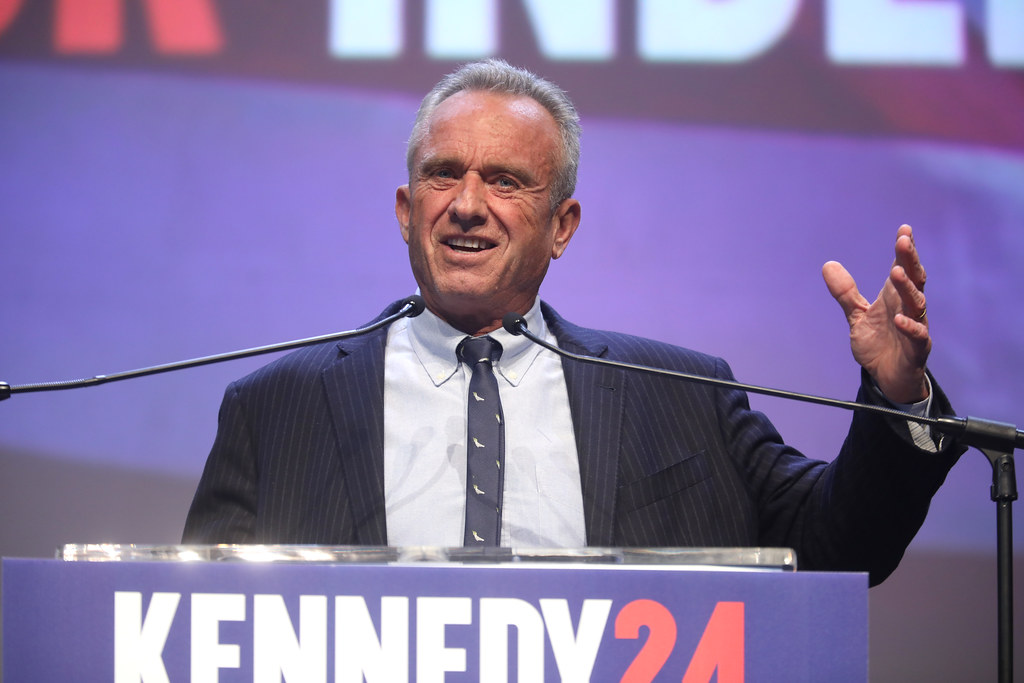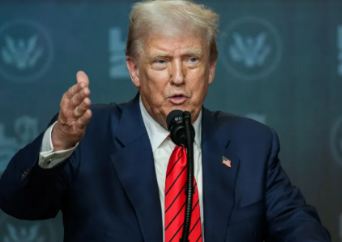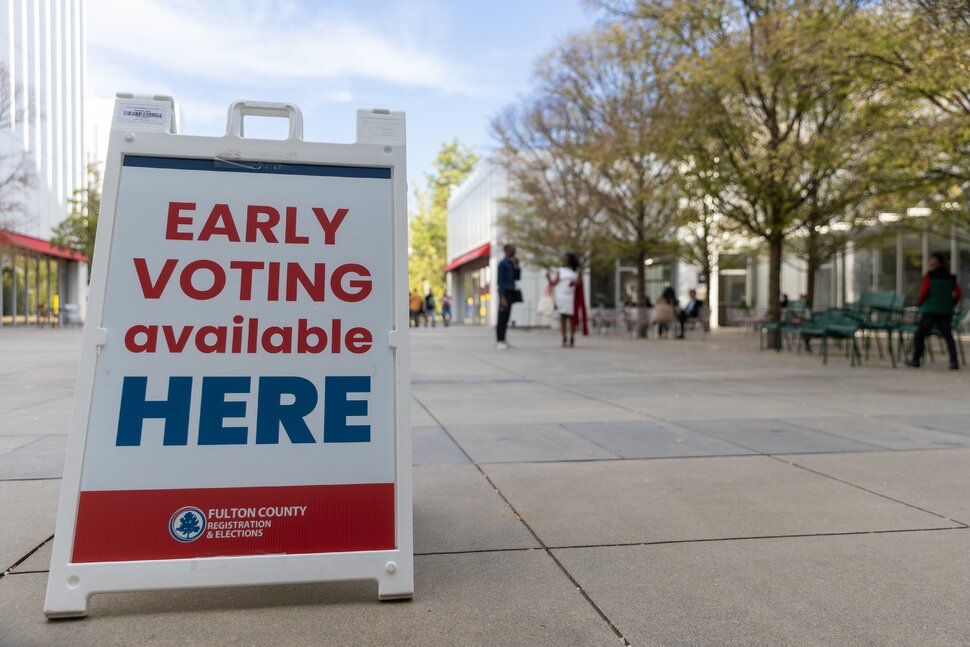Well in advance of any official announcements, leading Democratic contenders are already discreetly preparing for the post-Biden primary race.
What to Know:
- Gavin Newsom, Amy Klobuchar, Andy Beshear, and Ro Khanna are making early moves in key primary states
- President Biden has not declared his 2028 plans, creating a power vacuum within the party
- A generational divide is emerging as younger Democrats test future-facing messages
- Early campaigning is underway in Iowa, South Carolina, Nevada, and New Hampshire
- The race could redefine the Democratic coalition and its post-Biden policy vision
Democratic strategists have privately concluded that President Joe Biden will not seek re-election in 2028, and their actions reflect this belief. You can see it in the quiet uptick of early-stage travel. Newsom, Khanna, Klobuchar, and Beshear are already in Iowa, testing speeches and economic messages for the 2028 election.
Former President, Joe Biden, photo via Library of Congress
As Politico recently reported, the Democratic Party is not just facing a transition in leadership. It is still dealing with the political damage from the Biden cognitive decline cover-up scandal. For more than a year, top officials, campaign operatives, and media allies dismissed concerns about President Biden’s mental acuity. At the same time, behind closed doors, they were managing appearances, limiting exposure, and carefully scripting public events.
This kind of early jockeying isn’t unprecedented. In 2008, Barack Obama began his presidential campaign in February 2007, nearly a year before the Iowa caucuses. Hillary Clinton, John Edwards, and others also entered early. The 2016 race kicked off just as soon, with Ted Cruz announcing in March 2015, followed closely by Clinton and Bernie Sanders in April. The key difference is that the 2028 field is evolving, while the incumbent has not yet formally stepped down, and the party faces major credibility issues.
Leadership Vacuum and a Scandal Hangover
When the cover-up unraveled, the consequences were immediate. Voters felt betrayed. Journalists who had once offered friendly coverage began calling out the deception. Leaked documents and post-election reporting confirmed what many had suspected, and the trust gap widened overnight.
The scandal has left a lasting mark. Internal polling shows that public confidence in party leadership has eroded. Donors are more hesitant. Media outlets are more skeptical. And Democratic candidates now have to work harder to separate themselves from the fallout while still defending the party’s broader legacy.
This loss of credibility is not a one-cycle problem. It is an obstacle that every 2028 contender will have to overcome as they try to rebuild trust with voters who are still asking why they were kept in the dark.
Key Players Begin Positioning Themselves
California Governor Gavin Newsom has emerged as a high-profile figure to watch. In 2024, he was a leading surrogate for the Biden-Harris campaign, often engaging in pointed debates with conservative governors and appearing on national platforms to defend the administration’s record. His ambitious travel schedule and focus on national issues such as abortion access and homelessness hint at a larger political goal. His appeal lies in his ability to energize the progressive base while maintaining a media presence in red-state territory.
Governor Gavin Newsom, photo via X profile
Senator Amy Klobuchar of Minnesota is also testing the waters again. Known for her methodical approach and Midwestern sensibility, Klobuchar is re-engaging with voters in New Hampshire and Nevada, emphasizing antitrust reform, infrastructure policy, and consumer protections. Her focus on deliverables and bipartisan negotiation may appeal to voters seeking stability after years of polarization.
Senator Amy Klobuchar; photo via X profile
Meanwhile, Governor Andy Beshear of Kentucky is gaining national attention after securing a second term in a traditionally Republican state. His emphasis on disaster response, education investment, and public health makes him a compelling figure for Democrats looking for crossover appeal. If the party sees value in nominating a Democrat with red-state credentials, Beshear could become a serious contender.
Governy Andy Beshear; photo via X profile
Representative Ro Khanna of California brings a different profile altogether. With a focus on artificial intelligence policy, reshoring American manufacturing, and economic equity, Khanna is appealing directly to younger and tech-savvy voters. His presence on digital platforms and engagement with emerging policy areas position him as a forward-looking candidate who could push the party into uncharted territory.
Representative Rho Khanna; photo via X profile
But no matter who rises to the top, all 2028 hopefuls face the same vulnerabilities exposed in 2024. As covered in our Great Flip post-election analysis, Democrats lost swaths of blue-collar and working-class voters over inflation, distrust of government messaging, and a perception that the party was out of touch with everyday concerns. The administration’s failure to deliver clear immigration reforms on Dreamers, asylum, and border security alienated moderates and Latino communities in swing states. Any new candidate must address these losses to avoid repeating them.
Continuity or Change: A Defining Question for 2028
A core challenge for these candidates is how to balance respect for the Biden-Harris legacy with the need to offer something new. Some will choose to frame their campaigns as an extension of recent accomplishments, while others may argue that a generational or policy shift is overdue. This dynamic mirrors the broader debate within the party about how best to respond to changing demographics, economic pressures, and electoral expectations.
The early travel and messaging already reflect this tension. Continuity is a key theme for some candidates, who highlight job growth, infrastructure investment, and foreign policy stability. Others are subtly proposing a pivot: more aggressive economic populism, climate investment, or new social contracts for younger generations. The party is not yet fractured, but the conversations underway suggest that competing visions will soon become more explicit.
State-by-State Strategy is Already in Motion
Even without formal campaigns, early-state strategy is a key indicator of candidate intent. South Carolina, now elevated in the Democratic primary calendar, is seeing renewed attention from those hoping to build relationships with Black voters and community leaders. In Nevada, labor unions remain a powerful organizing force and are already being courted. New Hampshire and Iowa continue to offer testbeds for message discipline and voter contact strategies.
These visits serve multiple purposes: assessing voter appetite, connecting with local organizers, and gauging media reception. For campaigns that may only launch in late 2026 or early 2027, this groundwork could make a decisive difference. For contenders who are not widely known, early organization and name recognition will be crucial, particularly in states with a history of retail politics.
Wrap Up
The Democratic primary for 2028 has begun in everything but name. While the official race remains dormant, the early-state activity, donor outreach, and message testing suggest that multiple contenders are preparing for a wide-open contest. Whether the field ultimately centers around generational change, ideological contrast, or electability in swing states remains to be seen. But the party is clearly on the cusp of a transition, and those vying for leadership are already mapping the path ahead.
As the political calendar inches forward, these early moves could determine who shapes the Democratic Party’s message, structure, and electoral map for the next decade. Though the next nominee hasn't been announced, they're already engaging with voters and laying the groundwork for their campaign.





